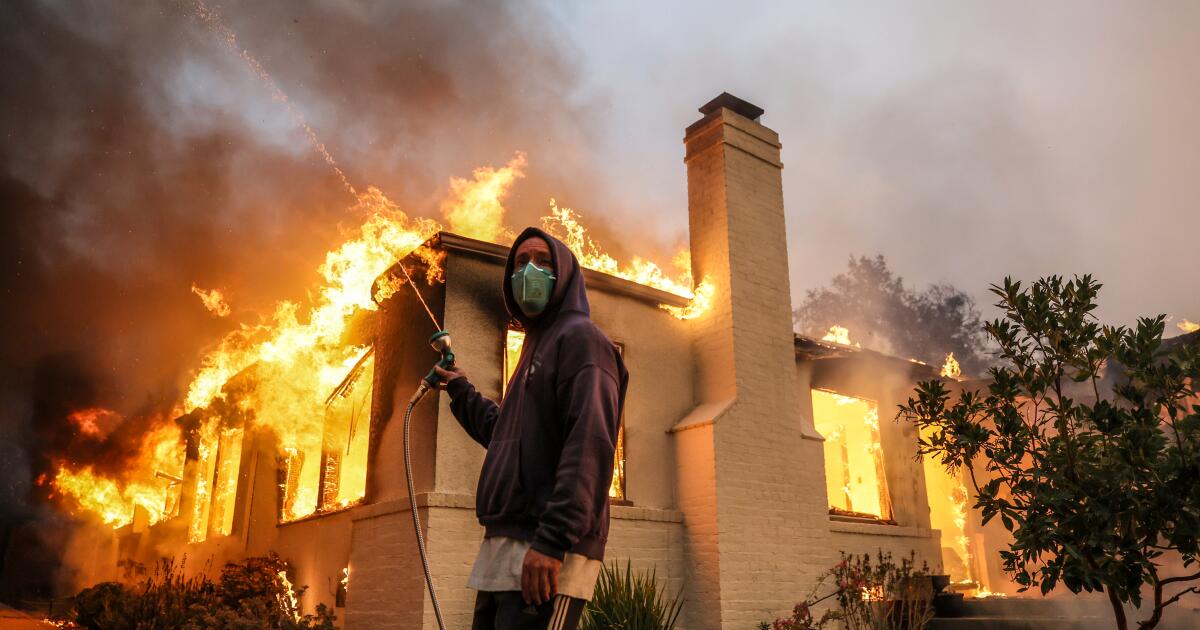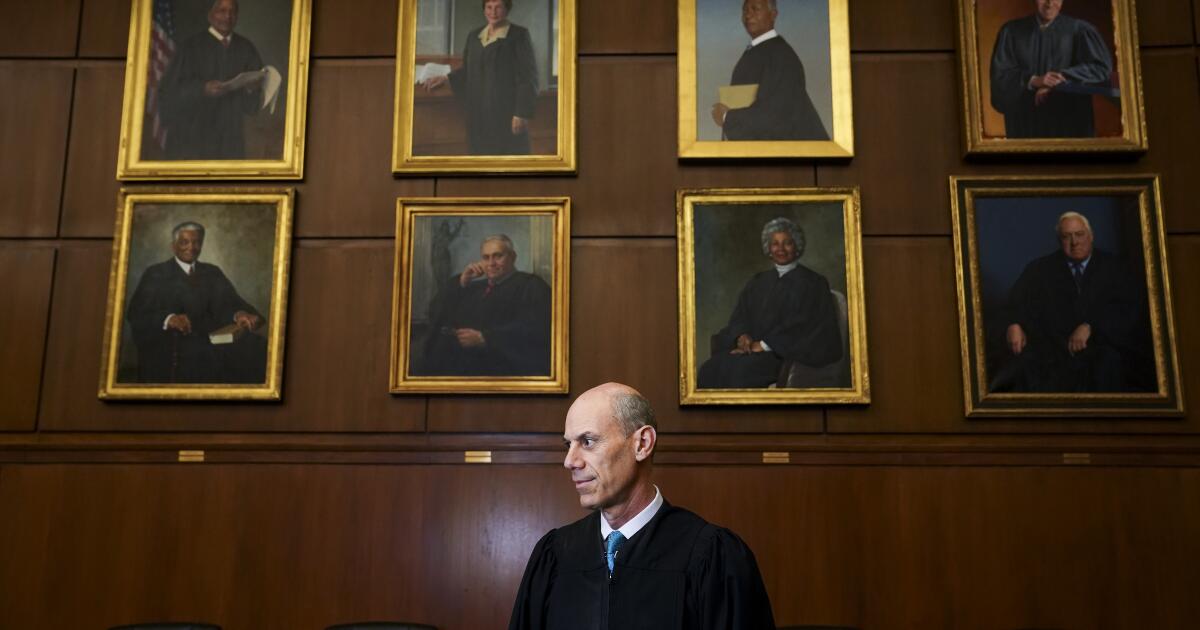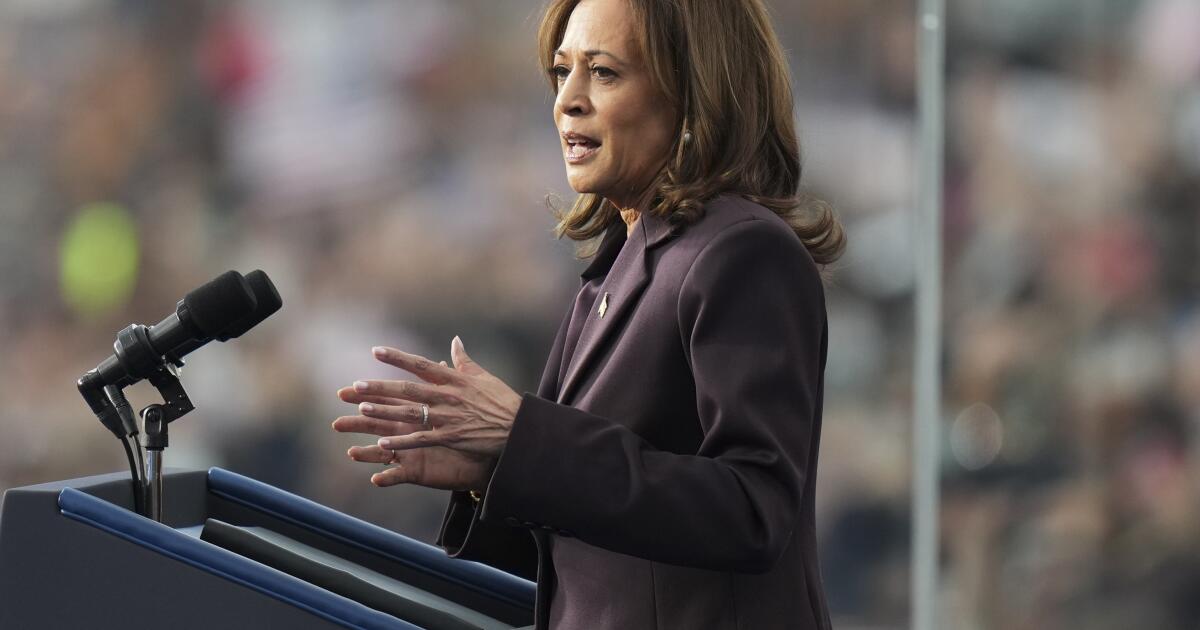
Gov. Gavin Newsom’s plan to make electric customers and utility shareholders share the burden of paying $18 billion more to shore up a state fund for wildfire victims faces a tough battle, with complaints from both consumer advocates and utilities.
Under Newsom’s plan, customers of the state’s three biggest for-profit utilities would pay $9 billion to bolster the state wildfire fund, which officials say could be depleted by damages caused by January’s Eaton fire. The state fund currently contains $21 billion.
An additional $9 billion would come from shareholders of Southern California Edison, Pacific Gas & Electric and San Diego Gas & Electric, according to a draft of the proposal.
The three utilities have been lobbying in Sacramento, asking that the fund be strengthened, since January when the Eaton fire roared through Altadena after igniting under an Edison transmission tower. But utility executives say they are opposed to their shareholders paying more.
Pedro Pizarro, chief executive of Edison International, told Wall Street analysts on a conference call Thursday that the company has told Newsom and lawmakers that any legislation to shore up the fund “would not have a shareholder contribution.”
“We will need to see the balance of an ultimate package,” Pizarro said.
On Friday, however, Edison spokeswoman Kathleen Dunleavy said the company is looking forward “to working with the governor and legislators on any proposal.”
Newsom and lawmakers created the state wildfire fund in 2019 through a bill known as AB 1054 to protect the three utilities from bankruptcy in the event their electric lines sparked a catastrophic wildfire. The first $21 billion into the fund was paid half by customers and half by utility shareholders.
Under the law’s protective measures, Edison could pay nothing or just a fraction of the damages for the Eaton fire if its equipment is found to have sparked the fire. The fire killed 19 people and destroyed 9,400 homes and other structures in Altadena.
The insured property losses alone could be as much as $15.2 billion, according to an estimate released last month by state officials. That amount does not include uninsured losses or damages beyond those to property, such as wrongful death claims. A study by UCLA estimated losses at $24 billion to $45 billion.
“We continue to work with the Legislature on policy that will stabilize California’s Wildfire Fund to support the recovery of wildfire survivors and to protect California utility consumers — even as wildfires become bigger and more destructive due to climate change,” Newsom’s office said Thursday in a statement about the plan.
Customers of the three utilities are already on the hook for contributing $10.5 billion to the original fund through a surcharge of about $3 on their monthly bill. Newsom’s plan would have customers pay $9 billion more by extending that surcharge by 10 years beyond 2035, when it was set to expire.
“We’re very disappointed to be at a point where there is even talk of more ratepayer money going to the wildfire fund,” said Mark Toney, executive director of the Utility Reform Network, a consumer advocacy group in San Francisco.
Toney said state officials told him in 2019 that there was a 99% chance the fund would last 20 years. Six years later, it could be wiped out by damages from the Eaton fire alone.
He said he believes there needs to be limits on the liabilities that the fund will pay for. “We can’t go back every three or four years and put more money in,” he said.
Since the fund was created, electric customers have also paid $27 billion for tree trimming and other work aimed to prevent wildfires, which is fast driving up electric bills, Toney said. Last year, California electric rates were the country’s second highest after Hawaii.
Despite that wildfire prevention spending, fires sparked by Edison’s equipment leaped from 90 in 2023 to 178 in 2024.
Newsom’s plan has been circulating with legislative leaders in Sacramento. It has yet to be introduced as a bill and would require approval of the state Senate and Assembly, which are now in recess.
Under the draft proposal, the $18 billion would go into a new “Continuation Wildfire Fund.” The new fund would not be created until the administrator of the state’s original wildfire fund determines additional funds are needed.
The plan also attempts to stop Wall Street hedge funds from trying to profit on the claims that home insurers would have against Edison if it is found responsible for the Eaton fire.
Many insurers have already filed suit against Edison, seeking reimbursement for the claims they have paid to homeowners and other policyholders. The hedge funds have been offering insurers money for those claims, betting that Edison will pay more to settle them in the future. This could speed the depletion of the state fund, officials say, since the fund would be required to reimburse Edison for the settlements.
To make the insurance claims less appealing to hedge funds looking for a deal, Newsom’s plan would cap the fund’s reimbursements to insurers at 40%.
It’s still unclear if the state fund will be required to cover Eaton fire damages because the investigation into the cause of the blaze is continuing. Edison has said a leading theory is that a dormant transmission line, not used since 1971, somehow became electrified and sparked the blaze.
The Palisades fire, which also ignited Jan. 7, is not covered by the state wildfire fund. Pacific Palisades is serviced by the Los Angeles Department of Water and Power, a municipal utility.



